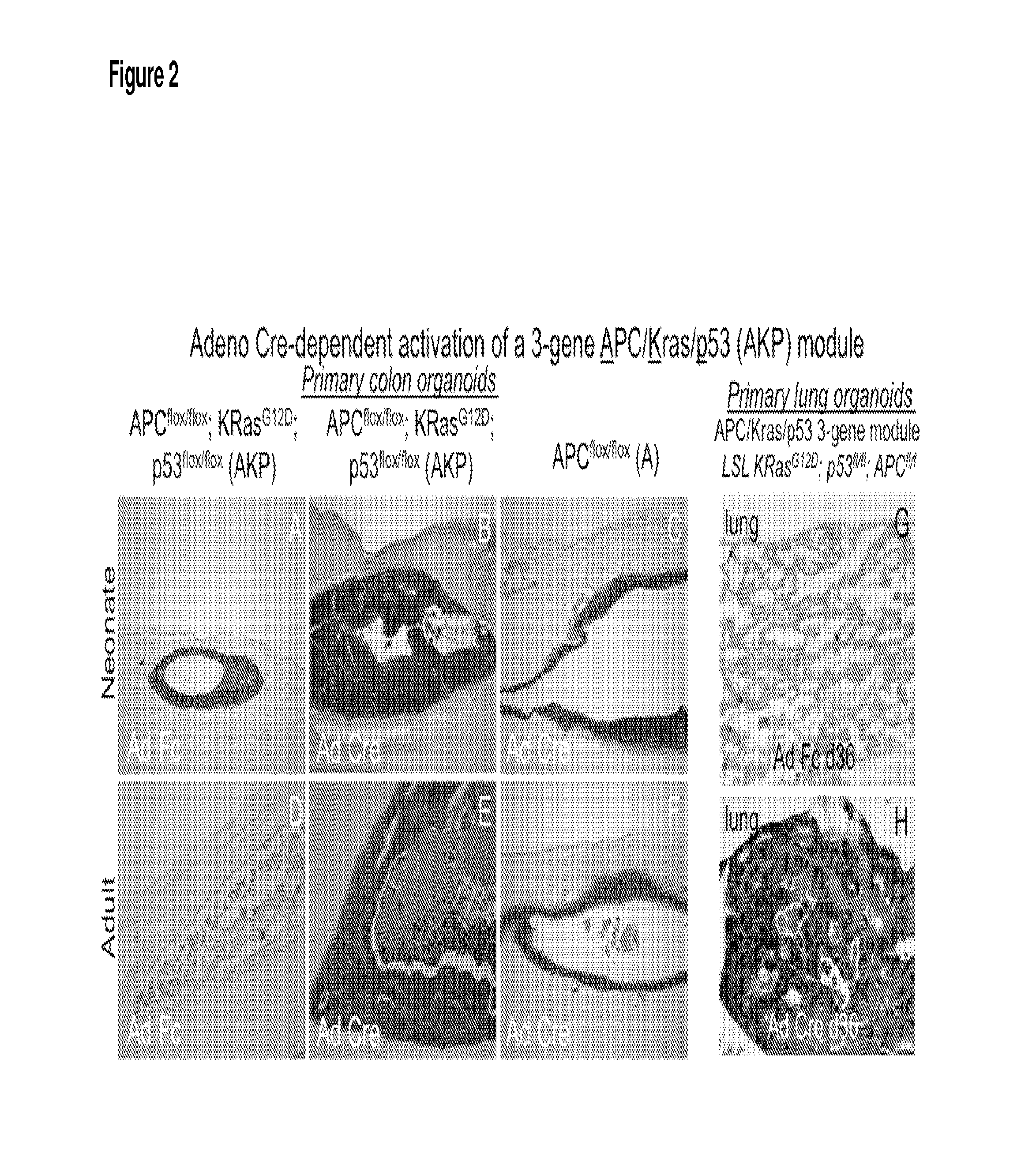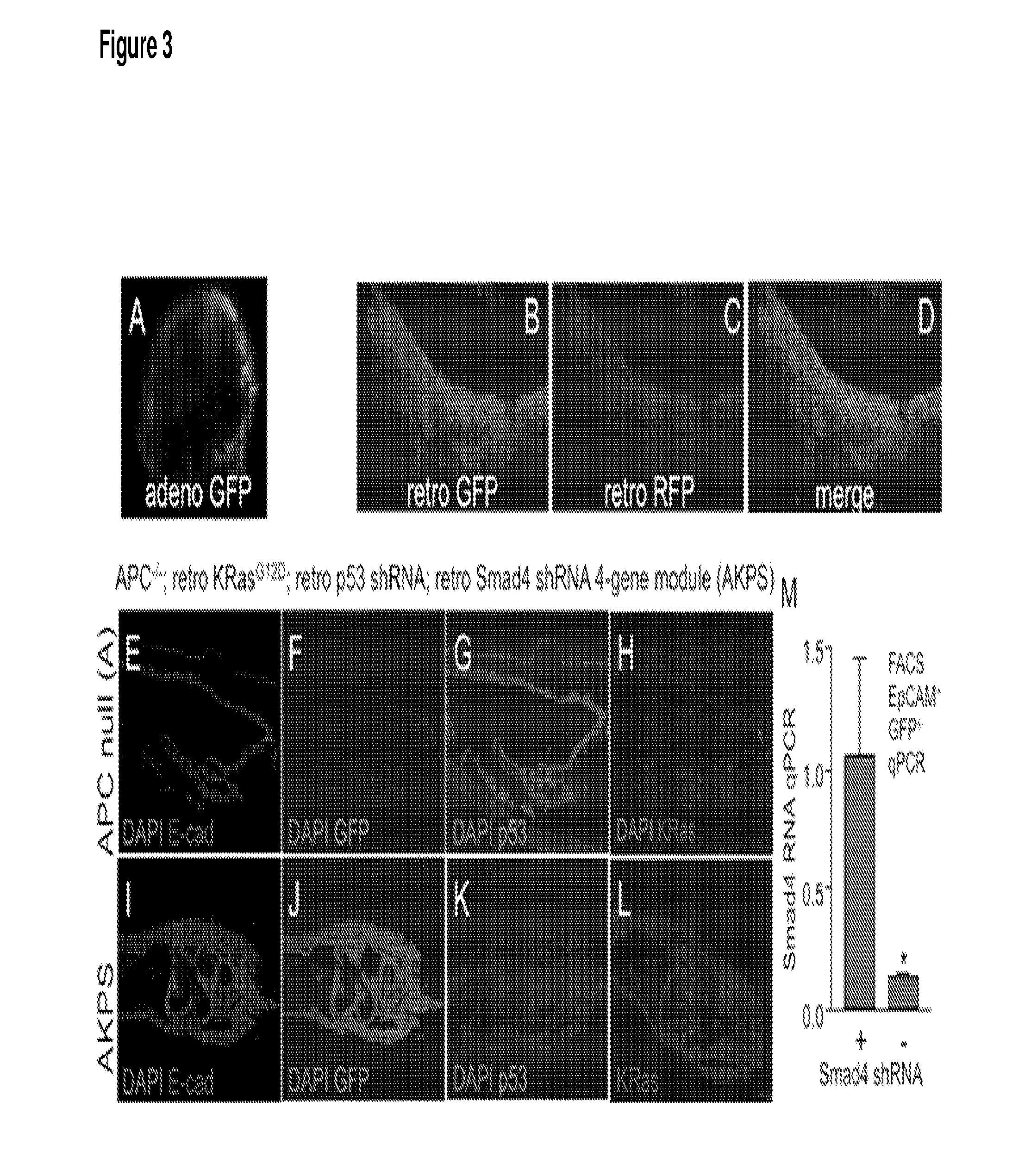Ex Vivo Culture, Proliferation and Expansion of Primary Tissue Organoids
- Summary
- Abstract
- Description
- Claims
- Application Information
AI Technical Summary
Benefits of technology
Problems solved by technology
Method used
Image
Examples
example 1
General Methodology for the Preparation of Air-Liquid Interface Cultures
[0132]Tissue is procured under sterile conditions, minced and mixed with type I collagen gel. Subsequently, these explant containing gels are poured onto transwell cell culture inserts with a collagen gel layer. Transwell cell culture inserts are available commercially from a number if resources e.g. Corning, Signaaldrich. These cell culture inserts are placed into secondary outer dishes containing medium such as HAMs F-12 with 20% FCS. Medium is changed every 7 days. Organoids prepared in this manner may be maintained for a year or more.
[0133]Detailed Protocol for Explant Culture.
[0134]This culture system maintains the cultured cells embedded in the collagen gel under an air-liquid interface environment. Before preparing the tissue, an inner dish with collagen gel bottom layer should be made. The following procedure is done using Cellmatrix type I-A (Nitta Gelatin Inc.) as a premixed type I collagen gel, howeve...
example 2
Culturing Intestinal Organoids, and Introduction of Transforming Events into Organoids
[0140]Multiple simultaneous oncogenic events may be introduced into organoids from a variety of tissues by either: (1) Cre-mediated activation of floxed alleles in organoids from compound allele mice, and / or (2) retroviral gene transfer.
[0141]An example of Cre-mediated activation of floxed alleles in organoids was performed with intestinal organoids from APCflox / flox; LSL KRasG12D; p53flox / flox mice. Neonatal colon explants cultured under air-liquid interface (ALI) prepared as described above resulted in expansive growth as epithelial spheres, with the apical side facing a central lumen, and sustained intestinal proliferation and multi-lineage differentiation over a range of 30 to >350 d. Further, the organoids exhibited spontaneous peristalsis, recapitulated the endogenous Wnt and Notch signaling of the intestinal stem cell (ISC) niche, and contained both Lgr5+(FIG. 1H) and Bmi1+ISC populations, w...
example 3
Gastric Cultures
[0146]The conditions used above to culture colonic explants were applied without modification to gastric tissue. Air-liquid interface (ALI) gastric cultures were observed to grow as epithelial spheroids with multi-lineage differentiation (PAS, H+ / K+ ATPase) (FIG. 6A-C).
[0147]Gastric organoids were robustly infected by adenovirus and retrovirus (FIG. 6D-F). Ad Cre-infected KRasG12D; p53flox / flox (KP) gastric organoids are dysplastic, proliferative and invasive (FIG. 6G-L).
PUM
 Login to View More
Login to View More Abstract
Description
Claims
Application Information
 Login to View More
Login to View More - R&D
- Intellectual Property
- Life Sciences
- Materials
- Tech Scout
- Unparalleled Data Quality
- Higher Quality Content
- 60% Fewer Hallucinations
Browse by: Latest US Patents, China's latest patents, Technical Efficacy Thesaurus, Application Domain, Technology Topic, Popular Technical Reports.
© 2025 PatSnap. All rights reserved.Legal|Privacy policy|Modern Slavery Act Transparency Statement|Sitemap|About US| Contact US: help@patsnap.com



